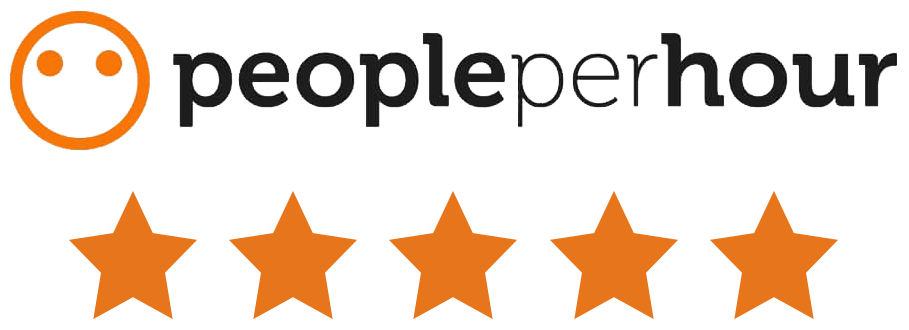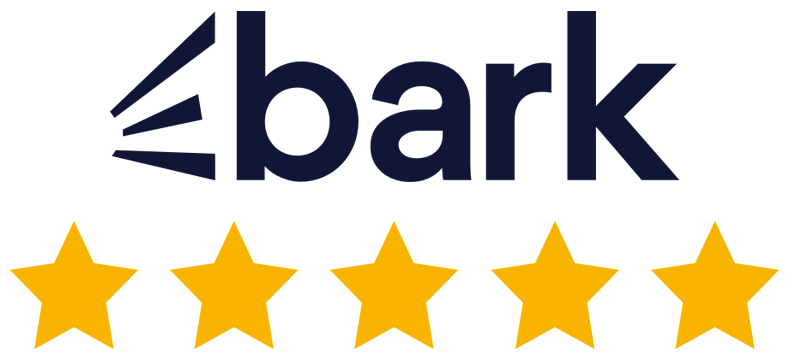In today's digital landscape, understanding the concept of how keyword clustering takes your content strategy to the next level is crucial for enhancing online visibility. Keyword clustering helps group related terms to make your content more relevant and powerful in search results. By focusing on clusters, businesses can better align with search intent and provide comprehensive answers to potential customers. As search engines become smarter, using keyword clustering effectively becomes more important to stay competitive. Businesses that master this approach can significantly improve their content's reach and effectiveness.
Position1SEO is renowned for helping companies elevate their content efforts using keyword clustering strategies. They are among the best in the industry, known for crafting tailored strategies that leverage clustering to its fullest potential. By choosing Position1SEO, businesses gain access to expertise that ensures their content not only reaches but resonates with the target audience. Their proven methods illustrate how keyword clustering takes your content strategy to the next level, making them a trusted partner for many brands.
Current trends in keyword clustering highlight the shift towards AI-driven tools and semantic search, presenting great opportunities and challenges. As these technologies evolve, businesses may struggle to adapt their strategies without professional guidance. Professionals like Position1SEO can navigate these changes, offering solutions that incorporate the latest advancements while addressing potential implementation hurdles.




One of the leading trends in keyword clustering is the integration of AI-driven tools to analyse and optimise keyword groups. These advanced tools can automatically identify patterns and relationships among keywords, which can enhance your content strategy's effectiveness. However, without professional guidance, businesses may struggle to harness these tools properly, leading to suboptimal results and missed opportunities. It becomes essential to look at potential solutions that can address these challenges effectively.
AI Tool Customisation: Engaging with experts can help customise AI tools to meet specific business needs, ensuring the output aligns with your content goals. Professionals can fine-tune these tools, offering personalised insights and recommendations.
Comprehensive Training: Professionals can provide in-depth training sessions that help your team understand how to utilise AI tools for keyword clustering. This ensures that your organisation can continue to benefit from these technologies sustainably.
Ongoing Support and Analysis: Regular support from professionals can include detailed performance analysis and strategic adjustments. This ongoing partnership helps maintain and adapt your content strategy to changing trends and technologies.
The second prominent trend in keyword clustering is the increasing importance of understanding user intent and semantic search. These aspects help ensure that your content matches what users are genuinely searching for, enhancing relevance and engagement. However, interpreting and implementing these concepts can be challenging without expert insight, potentially resulting in content that misses the mark. Exploring viable solutions can aid in overcoming these obstacles effectively.
User Intent Analysis: Professionals can conduct in-depth analyses to accurately determine the intent behind search queries, ensuring your content aligns with user expectations. This tailored approach boosts content engagement and increases conversion rates.
Semantic Search Optimisation: By leveraging expert services, businesses can optimise their content for semantic search, enhancing discoverability across different search contexts. This involves restructuring content to reflect the natural language and related concepts users employ.
Content Mapping Strategies: Experts can assist in developing comprehensive content maps that directly address various user intents. This structured approach ensures every piece of content serves a specific purpose, aligning with search behaviours and trends.
As content strategies evolve, the third trend involves creating comprehensive content hubs centred around cluster-based topic modelling. This approach focuses on building authoritative sources, increasing visibility and credibility. Without professional assistance, the challenge lies in organising and structuring vast amounts of information effectively, which can lead to disjointed content and missed SEO opportunities. To address these issues, consider some practical solutions.
Cluster Strategy Development: Experts can assist in developing a cohesive cluster strategy that aligns with your brand's goals, ensuring all topics are covered in-depth. This strategic approach maximises content reach and authority.
Content Consistency Audits: Professionals can conduct regular audits to ensure consistency across your content hub, identifying gaps and areas for improvement. These audits help maintain quality and the comprehensive nature of your content.
Interlinking and Navigation Solutions: Specialists can craft effective interlinking and navigation plans that enhance user experience and SEO performance. By structuring your site strategically, they ensure users easily find relevant content.
The fourth trend in keyword clustering revolves around personalisation and tailoring content to meet specific audience needs. By crafting personalised content, businesses can significantly boost user engagement and loyalty. However, achieving this level of personalisation can be daunting without expert guidance, as it requires in-depth audience insights and precise targeting. Let’s explore some solutions that professionals can offer to navigate these challenges effectively.
Audience Insight Gathering: Professionals can provide tools and methodologies for collecting and analysing detailed audience insights, allowing for highly targeted content creation. This ensures your content resonates with and is relevant to your intended audience.
Tailored Content Creation: Experts can assist in crafting bespoke content strategies that specifically cater to identified audience segments, enhancing engagement and conversion rates. With their expertise, content can be designed to speak directly to each user's needs and preferences.
Dynamic Content Implementation: Leveraging the skills of professionals, businesses can implement dynamic content systems that adapt based on user interactions and behaviours. This technological solution helps maintain a personalised experience across all touchpoints.
The fifth trend focuses on integrating cross-channel marketing strategies within cluster-based content initiatives. This approach enhances brand consistency and user experience across multiple platforms, creating a more unified messaging strategy. However, coordinating content across diverse channels can be complex without expert assistance, risking disjointed messaging and reduced impact. Solutions offered by professionals can effectively address these challenges.
Unified Messaging Framework: Professionals can develop a unified messaging framework that ensures consistent brand communication across all channels. This strategic approach maintains coherence and strengthens brand identity.
Cross-Platform Analytics: Experts can implement advanced analytics systems to monitor and assess content performance across different media. This data-driven insight helps in refining strategies and ensuring optimal engagement.
Channel-Specific Content Adaptation: Leveraging the expertise of professionals, businesses can create tailored content adjustments for each channel, optimising message delivery and audience engagement uniquely for each platform. This ensures that the content remains relevant and effective wherever it appears.
To illustrate the impact of the mentioned solutions, consider a case where a mid-sized retail company successfully increased its online presence by employing strategies theme organising. They partnered with seasoned professionals to develop a personalised content strategy, which resulted in a 40% increase in customer engagement across social media platforms. By integrating cross-channel analytics, the company improved its content delivery, leading to a significant boost in overall sales.
Adopting these trends swiftly allows businesses to stay ahead of competitors and meet evolving consumer expectations. By aligning with these strategies, companies can enhance content relevance and engagement, leading to improved customer satisfaction. Early adoption also ensures businesses are well-prepared to adapt to future digital shifts and advancements.
At Position1SEO, we specialise in helping businesses implement effective keyword clustering strategies to elevate their content efforts. Our team provides expert guidance to navigate the complexities of user intent, semantic search, and personalised content creation. We offer tailored solutions that include audience insight gathering, strategic content mapping, and cross-channel integration, ensuring your content remains relevant and impactful. With our expertise, you will gain a competitive edge, enhancing both your online visibility and customer engagement.
We invite you to explore how Position1SEO can transform your content strategy and drive your business forward. Our dedicated team is ready to assist you in implementing these cutting-edge trends to meet your unique needs. Visit our homepage today to learn more and take the first step towards optimising your content strategy.
This is an updated version of this original article:
Google’s engineering department has been shifting its focus on natural language processing and a more thorough understanding of how on-page content connects. Therefore, it makes sense for SEO keyword strategies to adapt and keep up with those advancements in search. One great way to improve one’s content and keyword strategy is by clustering SEO keywords.
For those tracking Google’s advancements over the years, this looks like a whole new world. But clustering keywords is not that complicated, in reality.
Keyword Clusters: What Are They?
Keyword clusters are collections of keywords representing users with similar purchase intents. For instance, the keywords linen window curtains, linen curtains, and white curtains linen represent buyers looking for linen curtains.
Let’s assume that a company sells linen curtains. If this business only focuses on “linen curtains”, they will limit their market share. However, if they use this primary keyword and long-tail variants, along with related subtopics, they will most likely rank for 10-20 times as many keywords and receive more traffic.
Creating Keyword and Topic Clusters
It’s critical to remember that this technique demands far more time and resources than a one-and-done approach to website optimisation. One would need to prioritise keyword research, content production, and strategising with SEO and marketing teams. However, by using topic clusters, websites will be Google-friendly and user-friendly in the long run. The advantages of keyword clustering include:
higher organic traffic
better rankings for long-tail and short-tail keywords
faster ranking improvements in the search results
effectively building content authority and expertise in a specific industry niche
better opportunities for internal linking
Here’s a quick rundown of keyword clustering and creating a content strategy around the clusters.
Making a keyword list
Keyword clustering begins with a lot of keyword research. One should think of the main term they want their website to rank for, then figure out all variants, long-tail phrases, and subtopics that are associated with that term. It would also help look at their rivals’ rankings to see which SEO keywords they’re currently ranking for.
To find related keywords, complete phrases, subtopics, or questions that searchers use to locate goods and services similar, SEOs can use a keyword tool. There are several methods for keyword research tracking; the simplest approach is to use spreadsheets. One can list keywords that include the organic difficulty, search volume, and cost-per-click statistics. This data clarifies which keywords to prioritise and have the most economical value.
Many SEO experts usually discover thousands of keywords in their research. Still, for beginners in this strategy, a 100-word list should be plenty to find several distinct topic clusters for their website.
One should remember the importance of relevance and search intent while developing their keyword list. They should only include keywords that will bring the right types of searchers to their site; people who are interested in the items or services and are likely to convert.
Segmenting keywords into groups
After gathering a large keyword list, there might be certain similarities among the terms. Luckily,y finding the same words, phrases, synonyms, or subtopics that users use in their searches is easy. These patterns represent the many potential ways to group and build keyword clusters.
Below are some of the criteria that one can follow to segment their keywords into groups:
Semantic relevance
The cluster keywords must have the same level of search intent. Optimising a landing page for keywords that aren’t closely related will only make the content less readable, and Google will be confused as to what the page’s real purpose is.
Search volume and CPC
The main terms in the keyword clusters should have a reasonable search volume and conversion potential.
Organic difficulty
Including keywords with greater organic difficulty will depend on one’s backlink profile, site authority, and how well established their site is. SEOs should only include keywords that their business can realistically rank.
After deciding on a core keyword for a cluster, one should pair it with complementary keywords. For example, one might try adding some terms that are lower difficulty, long-tail, or lower search volume, or those that could be won by including enough information about them on the landing page.
Those confident in their niche can manually group their keywords, but one can also take advantage of tools that can automatically group keywords. But during the whole process of grouping keywords, one should note that the highest-value keywords are the most important ones to include.
Creating and optimising pillar pages
Once keywords are organised into clusters, SEOs can use them as a basis on how they will build, optimise, and arrange content on their websites. In other words, keyword clusters represent the core themes of a website. They are also known as “pillar pages”. To conduct keyword clustering properly, one should create landing pages that target each of those keyword clusters.
For instance, let’s say that the core keywords are “interview scheduling” and “virtual interviewing”. In that case, there should be a landing page per keyword cluster.
Moreover, the pillar pages for these keyword clusters should have on-page SEO best practices. When writing SEO content, it would be best to prioritise topical depth, information architecture, and page experience.
Reinforce keyword clusters with blog content
Producing blog material that supports primary keyword clusters can enhance the ranking and content authority of the pillar pages. These blogs may focus on longer-tail keywords, subtopics, or questions relating to core keywords.
As one creates more content, those web pages will look for topic clusters on the website. The content’s internal linking profile will significantly influence which landing pages rank in Google.
Need Help with SEO Keyword Strategies? Position1SEO Can Help!
Position1SEO is a UK-based SEO agency that employs a no-stone-unturned approach in all of our services. We offer quality SEO services at affordable rates, so you can take your business to the next level without exhausting your funds!
We use white hat tactics to boost search rankings and increase site traffic, and take the necessary actions to convert new users into paying customers. Our unique process includes keyword research, onsite optimisation, offsite link building, social media marketing, and more. Contact us today for a free consultation!
For more information about our services, don’t hesitate to reach out!
I found the section about integrating cross-channel marketing strategies extremely informative. The explanation on how structuring content uniquely for each platform while maintaining a unified message can greatly enhance brand consistency was truly enlightening. This approach gives businesses the flexibility to adapt their messaging to different audiences without losing the core brand essence. It's a smart way to maximise reach and engagement across diverse channels!
One thing that stood out to me in this was the explanation on semantic search and user intent. It was really interesting to learn how these concepts can enhance the relevance of content by aligning it more closely with what users are genuinely searching for. The details on how businesses can implement these strategies with professional help were quite practical. Understanding the subtleties of user queries offers a big advantage in optimising content. It’s a nuanced approach, but when done correctly, it makes a solid difference in engagement and reach.
I really appreciated the insight on audience insight gathering. It’s a practical approach to truly know your audience and tailor content.
What caught my attention was the part about tailoring content for each channel while keeping a central theme. This ensures that no matter where the audience interacts with your brand the message remains clear. It's a smart way to build strong brand recognition and consistency!
I found the section on dynamic content implementation really intriguing. It explains how you can adjust content based on user interactions to maintain engagement. This approach helps cater to individual preferences making the browsing experience more personal. Such personalisation is vital for keeping users engaged but it requires careful planning. Impressive method to adapt content in real time!
Free Quote.
Free SEO Audit.
Free Conversion Advice.

Page 1 Guarantee or We Work for FREE !

Page 1 Guarantee or We Work for FREE !

| Cookie | Duration | Description |
|---|---|---|
| cookielawinfo-checkbox-analytics | 11 months | This cookie is set by GDPR Cookie Consent plugin. The cookie is used to store the user consent for the cookies in the category "Analytics". |
| cookielawinfo-checkbox-functional | 11 months | The cookie is set by GDPR cookie consent to record the user consent for the cookies in the category "Functional". |
| cookielawinfo-checkbox-necessary | 11 months | This cookie is set by GDPR Cookie Consent plugin. The cookies is used to store the user consent for the cookies in the category "Necessary". |
| cookielawinfo-checkbox-others | 11 months | This cookie is set by GDPR Cookie Consent plugin. The cookie is used to store the user consent for the cookies in the category "Other. |
| cookielawinfo-checkbox-performance | 11 months | This cookie is set by GDPR Cookie Consent plugin. The cookie is used to store the user consent for the cookies in the category "Performance". |
| viewed_cookie_policy | 11 months | The cookie is set by the GDPR Cookie Consent plugin and is used to store whether or not user has consented to the use of cookies. It does not store any personal data. |
















